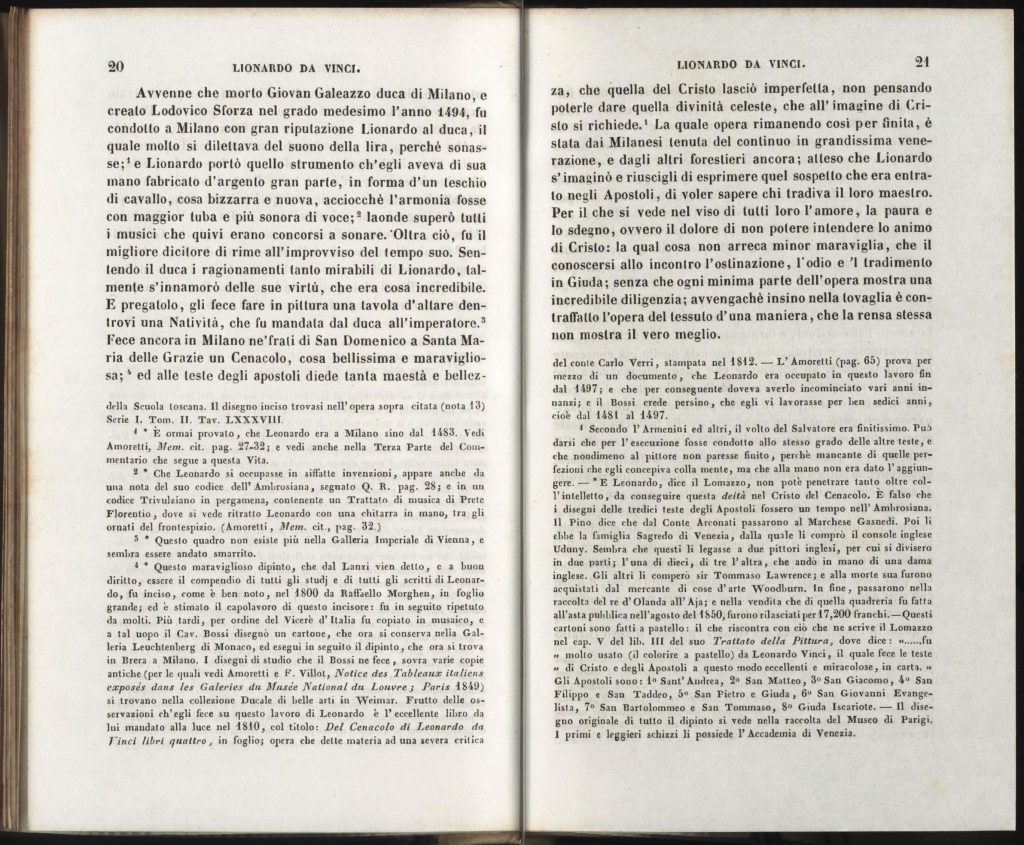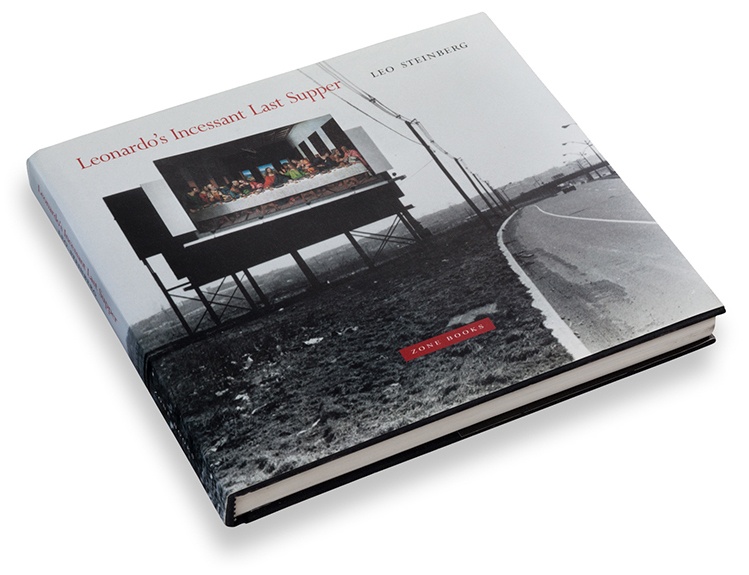The entire book is available online.
This is a book about the curious fact that it’s only been about fifty years since it has seemed reasonable to write an entire book about an individual work of art. One of the longest texts about an artwork written before the late 20th century is Giorgio Vasari’s descirption of Leonardo’s Last Supper, which occupies the equivalent of about two pages in a contemporary book. (In this edition from 1846, it’s typical that the editor’s footnotes take up half of each page. Vasari continues about one more page worth.) By contrast, Leo Steinberg’s Leonardo’s Incessant Last Supper is a remarkably dense book, which overflows with interpretations, so numerous that no reviewer or subsequent scholar has taken account of all of them.

One of the principal models of academic writing on art is problem-solving. A typical art historical essay poses and solves a problem, or produces an ambiguity where none had been detected, or adds complexity to meanings that had, in retrospect, been too simple. The fundamental model for the academic paper or monograph is the presentation of a puzzle, followed by either a new solution, a meditation on its complexity, or an argument for its fundamental insolubility. In short, our pictures have become puzzles.
This book is a bit intransigent about that discovery, which had the double effect of delighting me and alienating me from many of the pleasures my colleagues felt. The book has a longish chapter on hidden images in paintings (“cryptomorphs”), which I decided are mainly—not exclusively—an artifact of late 20th and 21st century scholarship. Some painters did hide images in their work, but most “discoveries” are likely to be hallucinations, artifacts of the desire to solve images by posing them as problems.

There are some very wayward chapters here, which I’m still happy with even though readers have beel alienated by them. One concerns a sociopathic, and possibly dissociative, Swedish art historian who hallucinated microscopic messages about the Panama canal in Impressionist paintings. Another, more serious, chapter is devoted to a book Dalí wrote about Millet’s Angelus, which was ubiquitous in bourgeois bedrooms and livingrooms in the early 20th century. Dalí convinced himself it was a fantasy of sodomy and incest. It’s “paranoiac” theater, but it is also an outstanding deployment of the exact toold still favored by art historians a hundred years later: he examines the painting, and even has new X-Rays made; he looks for parallels in popular imagery (including obscene postcards); he applies psychoanalysis (which he was talking about, at the time, with Lacan, and the book is contemporaneous with some of Lacan’s most influential theories). Many things distinguish Dalí’s book from monographs like Steinberg’s: but curiously, I think, they share a fascination with images newly understood as enigmas in need of complex interpretive machinery.